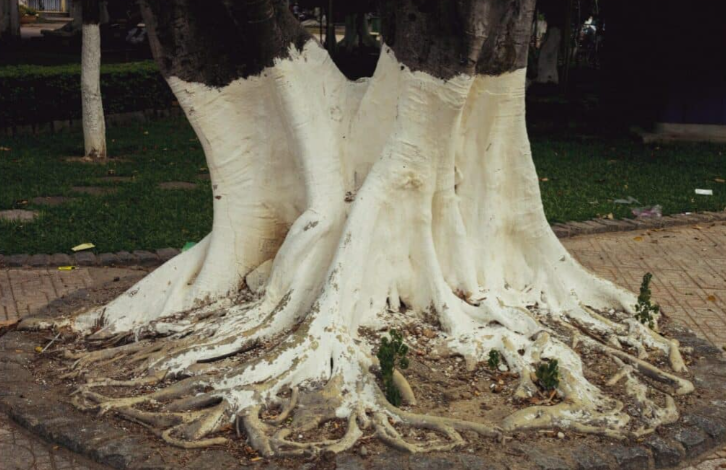The sight of white paint adorning certain tree branches has always sparked my curiosity as I stroll by, suggesting a hidden message or purpose. Recently, I delved into the fascinating technique employed by tree planters to communicate vital information about trees, unraveling a truly captivating revelation.
The color of the paint on a tree serves as a covert code, disclosing crucial details about the tree’s future and well-being. For example, trees marked with orange dots may be slated for removal, while purple markings often convey “no trespassing” or indicate that the tree stands on private land.
However, the purpose behind white paint takes a completely different turn. Tree planters apply white paint to trees during winter to protect them from sunburn, and the significance of this practice is truly paramount.

In winter, trees undergo substantial temperature fluctuations. In the daytime, the sun warms the tree’s bark, causing it to expand. As night descends, temperatures plummet rapidly, leading to the bark contracting and cooling swiftly. These abrupt temperature changes can result in bark splitting, posing a threat to the tree’s trunk.
Enter white paint. The light hue of the paint helps prevent the tree’s trunk from overheating during the day by reflecting sunlight away from it. Consequently, this minimizes the likelihood of cracks and splits induced by sudden temperature fluctuations.
Think of it as a natural sunscreen for trees, providing a shield against harsh winter weather. I found the application process of this white paint particularly intriguing.
Tree planters commonly use water-based latex paint for this purpose. Achieving optimal results involves diluting the paint correctly, usually with a one-to-one ratio of paint to water. This ensures the paint is not too thick, facilitating easy application to the tree’s bark.
While a paintbrush is the most common tool for application, some tree planters opt for spraying thinned paint onto the bark, covering a larger area more efficiently. Regardless of the method, it is crucial to ensure even coverage of the trunk to protect all its parts from the cold weather.
What fascinated me most was the frequency of applying this white paint. In most cases, tree planters paint the trunks only once a year.
Understanding the purpose behind painting trees white was an enlightening experience. It’s remarkable how a seemingly simple act, such as applying paint, can have a profound impact on the health of trees, especially during winter. White paint acts as a protective shield against sun damage and sudden temperature changes.
So, the next time you encounter a tree adorned with a fresh coat of white paint, know that someone cares about ensuring the health and prosperity of our leafy companions. Share this valuable knowledge with your family and friends to spread awareness of this simple yet impactful practice!
